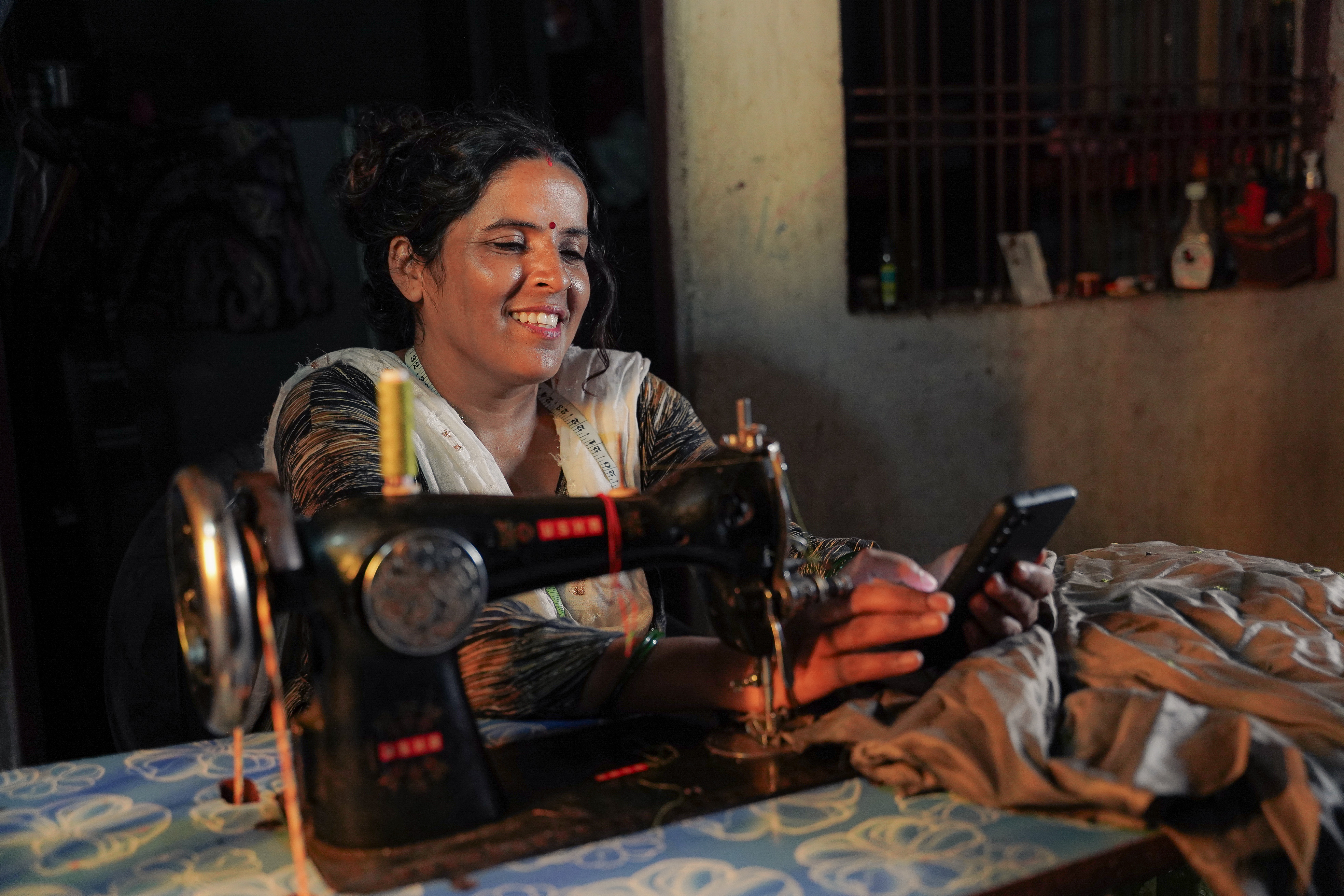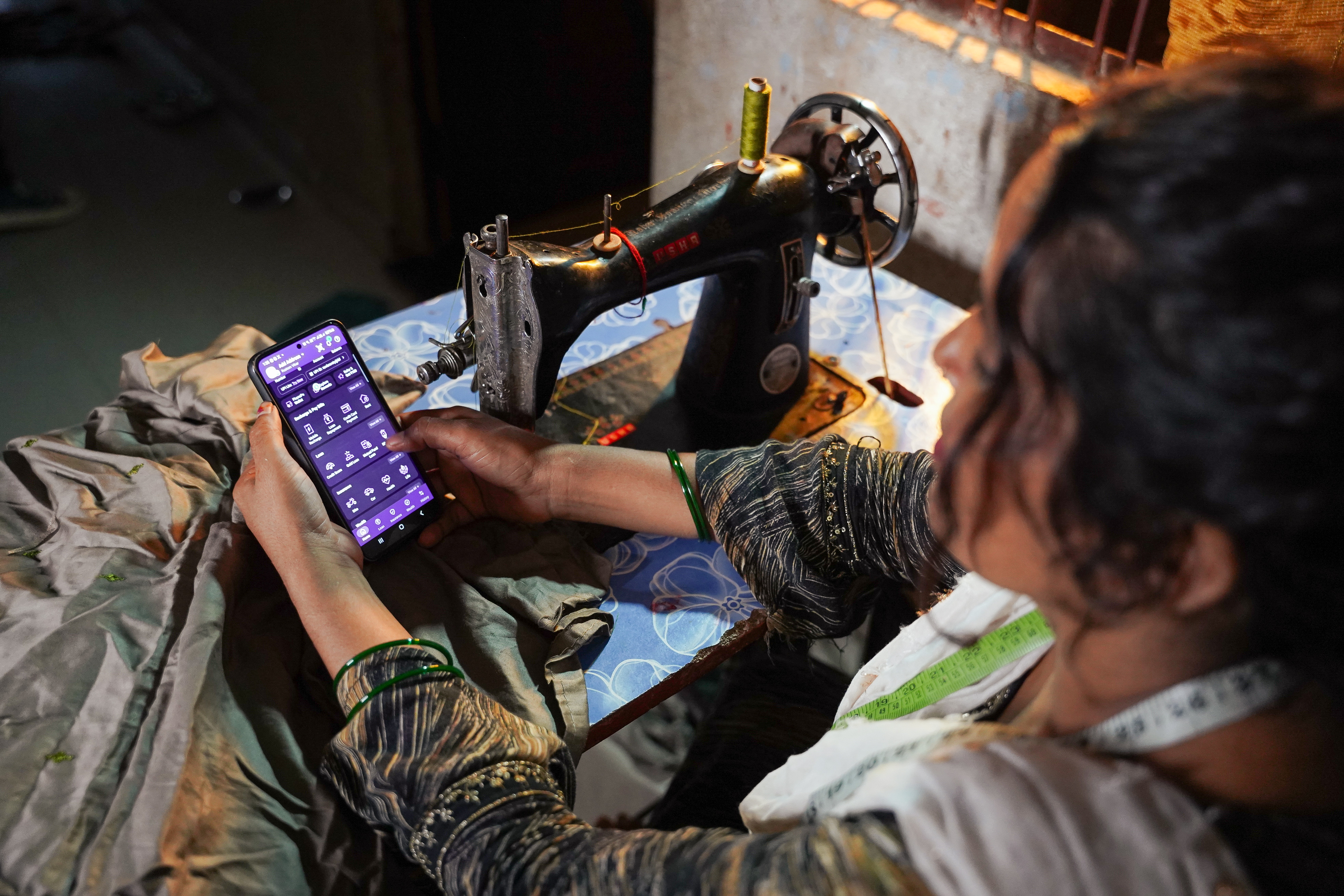Understanding micro-entrepreneurs and their relation with digital platforms in India
by Naini Dahra and Priyam Mrig
Oct 4, 2024
4 min
MSC’s recent research, in collaboration with Busara, sheds light on the evolving relationship between microentrepreneurs and digital platforms in India. The study highlights that only 38% of microentrepreneurs have successfully integrated digital platforms into their businesses. This underscores the opportunity and the challenge ahead—to bridge the digital divide that still leaves many microentrepreneurs without access to these transformative tools.
Microentrepreneurs are the lifeblood of India’s economy. They drive a significant portion of the nation’s growth from the ground up. These small-scale business owners often work in the informal sector and contribute immensely to employment and the GDP. However, despite their importance, many struggle with limited access to credit, market linkages, and digital tools that could help scale their businesses.
The impact of digital platforms has been profound for those who have embraced it. Yet, for most of those who remain unplatformed, the digital divide continues to widen and threatens to leave them further behind in an increasingly digital world.
These microentrepreneurs need a concerted effort to bring them into the digital fold. The effort must go beyond access to technology and create an ecosystem that supports their growth. This could be an ecosystem with simplified onboarding processes and training programs that build digital literacy. These efforts should also recognize the unique challenges women and rural entrepreneurs face, as they often face additional barriers to success.
Key insights from our research on Micro-entrepreneurs in India
MSC’s research with Busara has uncovered key insights into how digital platforms reshape the landscape for India’s micro-entrepreneurs. With more than 63 million MSMEs in India, understanding this shift is vital to drive inclusive growth.
The survey revealed a dynamic but challenging demographic profile. Most micro-entrepreneurs are between 25 and 45 years old, which indicates a young and driven workforce. However, a significant gender disparity exists with men’s dominance over the sector. Geographically, the split between urban and rural entrepreneurs is almost even, yet rural microentrepreneurs face more hurdles, especially in access to digital tools and infrastructure.
Awareness of digital platforms among microentrepreneurs is primarily spread through word-of-mouth, and many learn about them from peers or community networks. Despite this, the onboarding process remains complex. While some microentrepreneurs manage to register independently, a substantial number rely on peer support or agents. This highlights a critical area for digital platforms to simplify and streamline their processes.
Sustained usage of digital platforms is closely tied to digital literacy. Our findings also show that 38% of MEs who use these platforms report better business outcomes, such as increased income and expanded customer reach. However, those with lower digital skills often struggle to maintain active engagement, which limits their growth. This is especially true in rural areas, where digital literacy rates are lower and reliance on traditional methods remains strong.
The impact of digital platforms has been transformative. Many microenterprises have seen significant income boosts—some as much as 30%—with access to new markets and streamlined operations. However, this growth often comes with higher expenses, such as platform fees and logistics costs. Despite these added expenses, the overall business confidence among digital platform users has increased, with many microenterprises feeling more resilient and optimistic about the future.
Unlocking growth: How can India’s micro-entrepreneurs thrive in the digital economy?
Digital platforms are transforming industries. However, the road to success is not straightforward for many of India’s microentrepreneurs. Our latest research with Busara highlights the significant challenges they face on digital platforms, which include high platform fees, complex onboarding processes, and limited digital literacy. This is especially true for women and rural entrepreneurs who face unique struggles, such as smaller social networks and subsistence-driven priorities.
So, how can we help them?
Simplification is key. Many entrepreneurs are held back by complex digital onboarding systems. In such a case, streamlined processes and intuitive interfaces could make a world of difference for them. We have also seen the power of peer mentorship and targeted training in the field, which boost digital literacy and help entrepreneurs build confidence and stay engaged.
We must develop credit solutions that meet their needs and help them scale their businesses to level the playing field. More importantly, women-led networks and community-driven support can break down the barriers that hinder several women’s access to digital opportunities.
India’s digital economy is full of promise. However, that potential will only be realized when all microentrepreneurs have the support they need to thrive, regardless of gender or geography.
Empowering microentrepreneurs: Key takeaways and next steps
We conducted a survey with Busara to gain a deeper understanding of the unique challenges and opportunities microentrepreneurs face in India, especially as they adapt to the rapidly evolving digital landscape. This research is vital to identifying effective strategies to support these entrepreneurs.
The findings reveal a dual reality. Despite the immense potential of digital platforms, many microentrepreneurs still grapple with limited digital literacy and inadequate access to financial resources. The gender disparity and the rural-urban divide further exacerbate these challenges and hinder the ability of many entrepreneurs to fully benefit from digital tools. Despite these barriers, those micro-entrepreneurs who have successfully integrated digital platforms into their operations report marked improvements in income generation and market reach. However, the complexity and time-intensive nature of the onboarding process has emerged as significant pain points, which deter wider adoption.
The development and implementation of tailored programs that improve digital literacy are vital to addressing these issues and enhancing engagement with digital platforms. The onboarding process must also be simplified to make these platforms more accessible. Additionally, the expansion of financial access through customized and innovative credit solutions can empower more microentrepreneurs to harness the benefits of digital tools.
The future of India’s microentrepreneurs is filled with promise, with significant potential for growth and resilience. We can open new pathways for these entrepreneurs to succeed if we address the challenges highlighted in our research and enhance digital platform engagement. This will ensure they continue to be a vital force that drives the nation’s economic progress.
Written by

Naini Dahra
Assistant Manager
 by
by  Oct 4, 2024
Oct 4, 2024 4 min
4 min

Leave comments